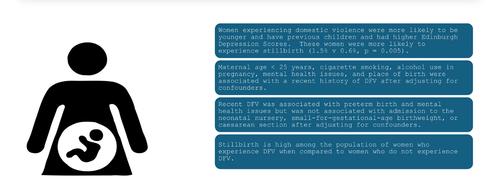Domestic and family violence and associated maternal and perinatal outcomes: A population-based retrospective cohort study
Abstract
Background
Domestic family violence (DFV) is a global health concern affecting one in three women worldwide. Women are vulnerable to DFV throughout their life; however, pregnancy introduces an increased risk of experiencing DFV for millions of women and birthing people.
Methods
Routinely collected data from two hospitals in one local health district in New South Wales, Australia, were examined to determine the prevalence of DFV from 2010 to 2019. Demographics and outcome factors were compared by a reported history of DFV. Multivariable logistic regression was used to assess for predictors of DFV and to assess DFV as a predictor of adverse maternal and perinatal outcomes.
Results
One percent of women (538/52,469) experienced DFV in the past year. Women experiencing domestic violence were more likely to be younger and have previous children, and had higher Edinburgh Depression Scores. These women were more likely to experience stillbirth (1.5% vs. 0.6%, p = 0.005). Maternal age < 25 years, cigarette smoking, alcohol use in pregnancy, mental health issues, and place of birth were associated with a recent history of DFV after adjusting for confounders. Recent DFV was associated with preterm birth and mental health issues but was not associated with admission to the neonatal nursery, small-for-gestational-age birthweight, or caesarean section after adjusting for confounders.
Conclusion
There was a relationship between DFV and poorer health outcomes for both women and their babies. This study highlighted that stillbirth is high among the population of women who experience DFV when compared to women who do not experience DFV.



 求助内容:
求助内容: 应助结果提醒方式:
应助结果提醒方式:


